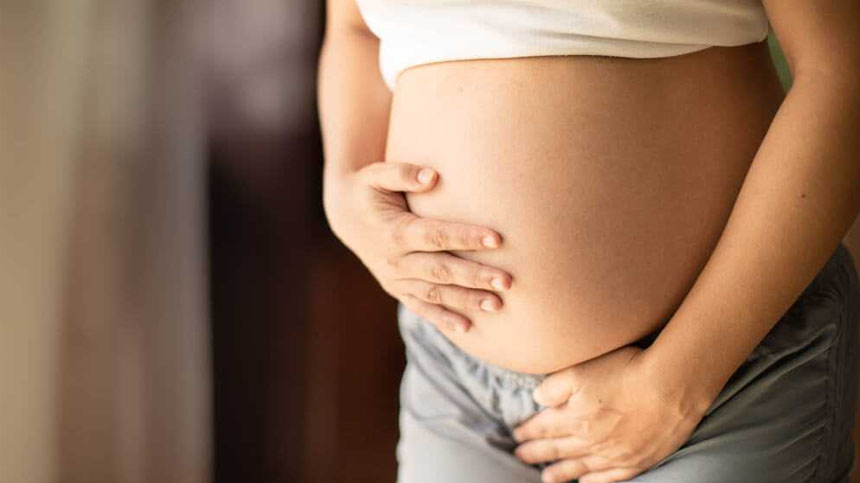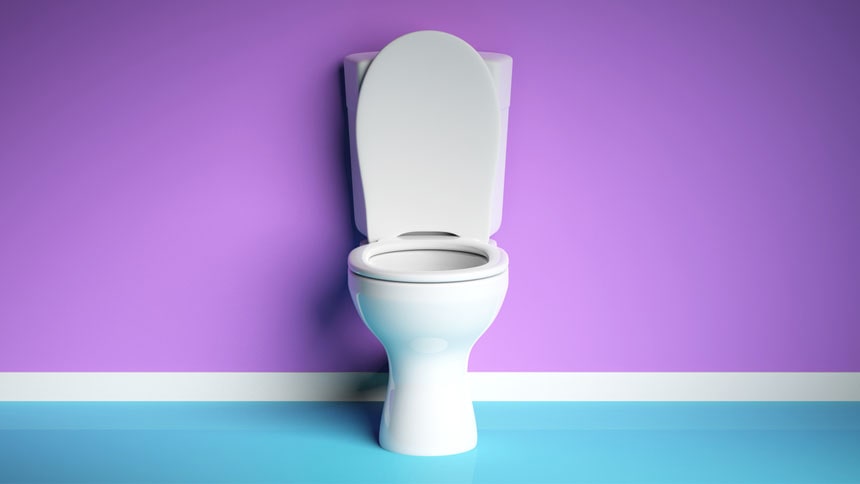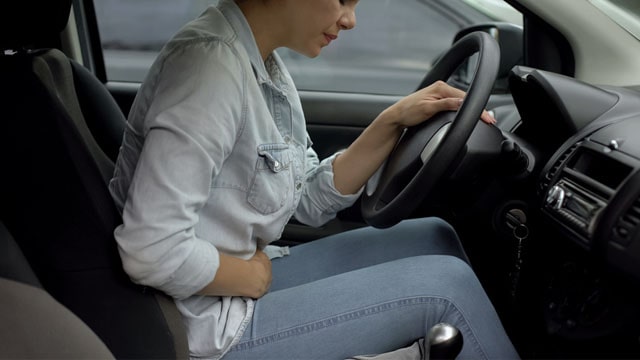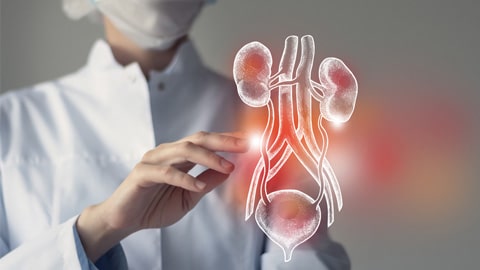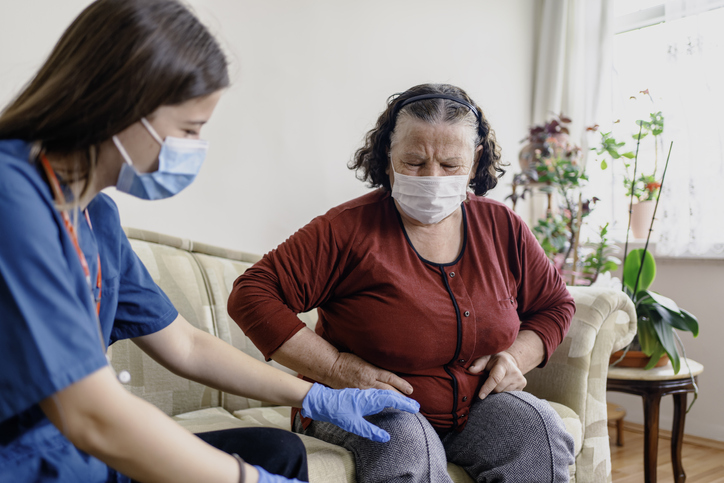Are you in your 40s and noticing that you’re leaking pee (urine), not always making it to the toilet in time, or needing to get up in the middle of the night to pee? You might be wondering if it’s connected to the hormonal changes that happen during menopause and the time leading up to it (perimenopause).
After all, lots of changes can happen in your body when your levels of the hormone oestrogen drop during this time. And if you’re already dealing with other challenging menopausal symptoms, wetting yourself as well may leave you feeling particularly distressed or embarrassed.
But the good news is that bladder leaks aren’t an inevitable part of menopause. And if you are dealing with urinary incontinence, there are proven, midlife-friendly steps that can help.
Leaking pee – is it a symptom of menopause?
Some studies have shown that in your middle years, you’re at increased risk of both of the 2 most common forms of urinary incontinence in women.
Going through the menopause has been linked with stress incontinence – when you leak pee if your bladder’s put under sudden extra pressure. And in midlife and beyond, you’re also more likely to get urge incontinence – a symptom of an overactive bladder, which means you need to pee more urgently and frequently, and may not always get to the toilet in time.
During the menopause and perimenopause, falling oestrogen levels are linked to a range of symptoms, such as night sweats and hot flushes. And oestrogen is also known to help keep muscles strong – so when it drops, your muscles can weaken. Some research has linked urinary incontinence to low oestrogen leading to the weakening of muscles that help you hold in pee – such as the muscles that stretch across the base of your pelvis, known as your pelvic floor.
Why it’s not all about falling oestrogen
However, there are other studies that don’t support a strong connection between incontinence and low oestrogen. In fact, some have shown that women who have stress incontinence before menopause find symptoms get no worse afterwards, and may even improve.
Other research has found that menopause is only linked to mild, temporary incontinence symptoms, which happen once a week or less and often ease once you’ve been through the transition (postmenopause).
Researchers believe that unpredictable hormone increases that happen around this time are probably more strongly linked to urinary incontinence than low oestrogen. One theory is that during perimenopause, you may have menstrual cycles where you don’t release an egg (ovulate) – and that can mean you have high levels of both oestrogen and progesterone for longer than normal, which may trigger occasional leaks. Once you’re postmenopausal, your hormone levels settle down, and these leaks may reduce.

What else could be causing incontinence?
Hormonal changes don’t necessarily mean you’ll get urinary incontinence. In fact, a lot of research suggests that other things that can happen at this time of your life are probably more strongly connected to bladder leaks.
Weight gain
If you’ve put on weight in midlife, you’re not alone. Muscle mass decreases as you get older, and because muscle helps your body burn calories, this can slow down your metabolism. And while hormone changes alone don’t typically lead to weight gain, they can cause your body to store fat differently – around your tummy, rather than on your thighs or hips.
Being overweight or obese is a risk factor for both stress and urge incontinence, as it puts more pressure on your bladder and pelvic floor muscles. And gaining weight around your middle is especially likely to raise your likelihood of leaks.
HRT and a leaky bladder
Taking hormone replacement therapy (HRT) to help with menopause symptoms? Some studies have suggested that ‘systemic’ HRT – the type you take as tablets, a patch or gel – may make incontinence symptoms worse, although the results have been mixed.
Various things may be involved in whether you’re affected, including the type of HRT you’re taking, your age and the stage of menopause you’re in. And more research is needed to understand the connection.
Oestrogen that’s applied directly to your vagina (local oestrogen) is a different type of HRT, which can be used to treat urinary incontinence (see below).
Why menopause is linked to leaking pee
Hormone changes may not have a strong direct link to urinary incontinence, but researchers think that the other troublesome symptoms they can cause – from night sweats and poor sleep to irregular bleeding – might make you more aware of little leaks that hadn’t really bothered you before.
Some people might also mistake changes in vaginal discharge during menopause for pee. And diet and lifestyle changes made during menopause could reveal incontinence symptoms you hadn’t previously noticed. But scientists still don’t fully understand these possible links, and more studies are needed.
Diabetes
Midlife weight gain, especially around your middle, is linked with a raised risk of type 2 diabetes – and diabetes can increase your chances of having urinary incontinence.
What should I do if I’m getting leaks in the menopause?
There are lots of general lifestyle measures and treatments to help with urinary incontinence. But the following tips may be particularly helpful for midlife leaks.

Lose weight if you need to
If you’re overweight, losing just 5 to 10% of your bodyweight can lead to a significant improvement in leaks. Bonus: losing weight can also help with hot flushes.
As your metabolism can slow down in midlife, it’s likely that you’ll need to take in fewer calories and do more exercise to shift some kilos. Read more about how to lose weight in menopause.
Try pelvic floor exercises
If your pelvic floor muscles are weak, doing regular exercises can help strengthen them. Read about how to get the most from pelvic floor exercises for incontinence.
Talk to your doctor about HRT
HRT in the form of local oestrogen – which is applied inside your vagina as a cream or pessary – may be helpful for easing leaks. However, systemic HRT isn’t recommended as a treatment for urinary incontinence.
If you’re taking systemic HRT and you’re concerned that it’s making leaks worse, talk to your doctor. They may be able to work out if it’s part of the problem. And if HRT is important for managing other menopausal symptoms, they may have other suggestions, such as trying a different type.
Ask about other treatments
If the above options and self-care measures don’t help with urinary incontinence, your doctor might recommend other non-surgical treatments. In some cases, surgical treatments and procedures may be considered.
Do I need to see a doctor?
If you’re not sure whether to see your doctor, try our Smart Symptom Checker. It’s been designed with doctors to help you work out if self-care steps are the best next option for you, or whether you should make a medical appointment.
But remember that you don’t need to put up with urinary incontinence – or any other symptoms of menopause. If it’s getting in the way of your life, you should always see a doctor.
You may feel a bit uncomfortable or embarrassed talking about incontinence in midlife, but it’s important to get the help you need. It’s something lots of women have, and doctors are used to helping with it. Your doctor will be able to give you a check-up and diagnose the type of incontinence you have. If necessary, they may refer you for specialist help.
There are also some symptoms that mean you should get urgent medical help. If you have urinary incontinence and very bad tummy pain or a high temperature (fever), you’re suddenly unable to pee or you suddenly can’t control when you pee or poo, go to the emergency department. Read more about when to see a doctor and how urinary incontinence is diagnosed.
Your health questions answered
What’s the best way to deal with irregular bleeding and leaks at the same time?
“Having to manage both these symptoms can be very uncomfortable and inconvenient. So do talk to your doctor, as they may be able to help you find ways to ease both symptoms. While you’re finding solutions, there are different products that can help, including special pads and underwear that can absorb blood and pee. As both bleeding and leaks can be unpredictable at this time, you could try having handy bags of products stored where you might need them – such as in your handbag, your desk at work or your gym kit. Read more about incontinence products for women to help you work out what might suit you best.”



